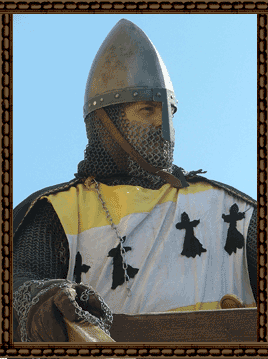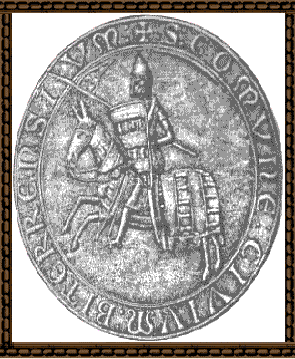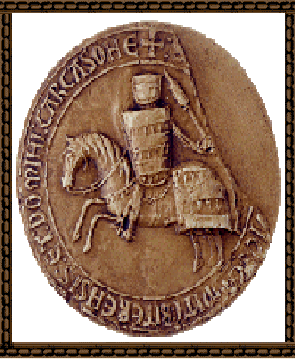

Dynasty of Trencavel
The first traces of the word "Trencavel" dates back to the IXth century. Indeed, it is thanks to battles that the Trencavel get access to nobility. Trencavel, which means "cut throughout", shows that the art of war is a family story. From 1060, Trencavel are viscounts of Albi and Nimes and, all along the centuries, through many wars between local Lords, wedding unions and strategic ones, the Trencavel, in 1150, possess the (huge) viscounties of Beziers, Carcassonne and Albi.
The Trencavel, despite wedding unions, despite the fact that they are the count of Toulouse' s vassals, keep tumultuous relationships with the family of Toulouse. Many conflicts lead their armies to fight against one another. But, in 1208, in front of the francilian and popist invader, they are unified. Excommunicated in 1209, Roger Trencavel, vigorously fights but, in order to avoid the massacre, he chooses to suurender. He is emprisonned in 1209 and dies the same year.Raimond II Trencavel, Raymond Roger's son, who has been secretly hidden in Aragon from 1209, plays, even if he is very young (12 years old) an important role in the occitan reconquest led by Raymond VII of Toulouse. Indeed, from 1216, the country rises up against Simon de Montfort's domination. The latter is being killed by trying to conqueer Toulouse with a legitim siege in 1218. His successor, Amaury, his son, is unable to face up to this general revolt and progressively gives back the fields which have been conquered during the Albigensian crusade.
In 1224, Carcassonne is recaptured and Raymond VII gives the town to its legitim owner: Raymond II, 20 years old, becomes Carcassonne viscount.
He keeps the town until 1226 when Louis VIII conqueers it again. This dispossession is marked by Meaux-Paris' treaty in 1229 which says the town is a kingly seneschal. Raymond must exile himself in the crown of Aragon.
These ten years that pass are a necessary period for this young man to learn the art of war, alliances and strategies.
1240: It is time for the new conquest. All that is situated between Nimes and Carcassonne is taken back very quickly. The rage at leading the reconquest of the fields get the better of all the francilian opponents.
On September 17th 1240, Raymond II gets to Carcassonne, takes back the suburbs and, inside the town, he owns the population. A popular uprising tends to appear so as to help him to take back his fields but, fate plays a trick to Raymond II.
25 days later, a crusader army, composed of mercenaries and scoundrels from far North, prevents this reconquest and plunges South-West in times of crime, destruction and massacre; an usual thing for these kinds of army.
The end could have been the opposite by a day or so... If Carcassonne had been taken back, the whole South-West could have uprisen again. By no means against the crusader armies, Raymond II cannot conqueer Carcassonne and goes back to Aragon. Since he si a man of honour and since he has not been able to take back his fields and to protect his people, he breaks his seal in 1246. Nevertheless, is it to expiate his faults, Raymond II Trencavel, decides to go to the 7th crusade. Maybe he would try, as his ancestors, by the sword's art, to rebuild a new empire far from his native Occitanie...
His last known act dates back to 1263. We suppose that he dies before 1267, which is the year when his son Roger appears under the name of Roger de Béziers.
This dynasty ends with the death of the latter during the 8th crusade in 1270. Did he have the same desire of conquest and reconquest as his ancestors? History did not want it this way.
Raymond Roger Trencavel's seal (Raymond II's father)
Raymond II Trencavel's seal









